How to Eat Garden to Table
Eat fresh from your own backyard! The words “garden fresh” appear on food labels and menus for a reason: There’s nothing more appealing than the idea that the produce you eat (and feed your family) was just picked from your garden. Here's how to put your (or someone else's) garden to good use in the kitchen.
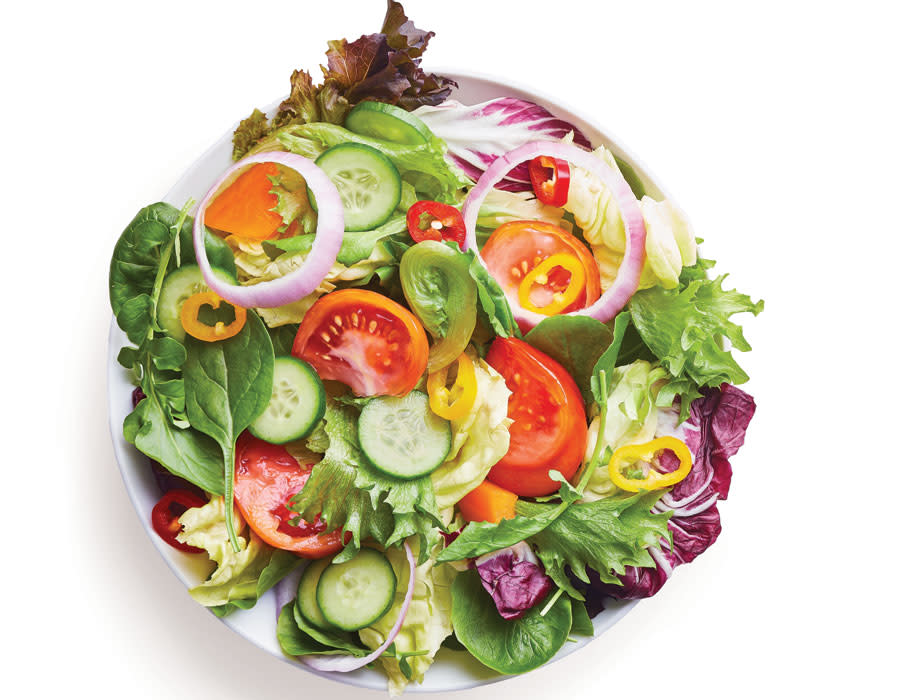
(Note: This post contains affiliate links. As an Amazon Associate, we earn from qualifying purchases made through affiliate links.)
There’s nothing more appealing than the idea that the produce you eat (and feed your family) was just picked from your garden. Growing your own fruits and vegetables not only saves you money, it provides a wealth of nutrition. Plus it’s fun to walk through your yard and pluck a sun-warmed tomato off the vine at its flavor peak, cut crisp lettuce leaves whenever you need them, or harvest fresh herbs that will fill your home with enticing aromas as you cook a meal.
Growing your own food is healthy, fun, and best of all, connects you with the Earth in a personal way — you develop a relationship with your garden. And studies show that the act of gardening helps to reduce stress levels. Once you’ve planted your garden, all you need is water, sunshine, and a little TLC to be harvesting fresh and flavorful ingredients that will last you all season long.
Garden-Fresh Guide
Nothing’s more flavorful than produce at its peak. Embrace freshness and excite your taste buds by picking the best your garden, farmer’s market, or the produce aisle has to offer.
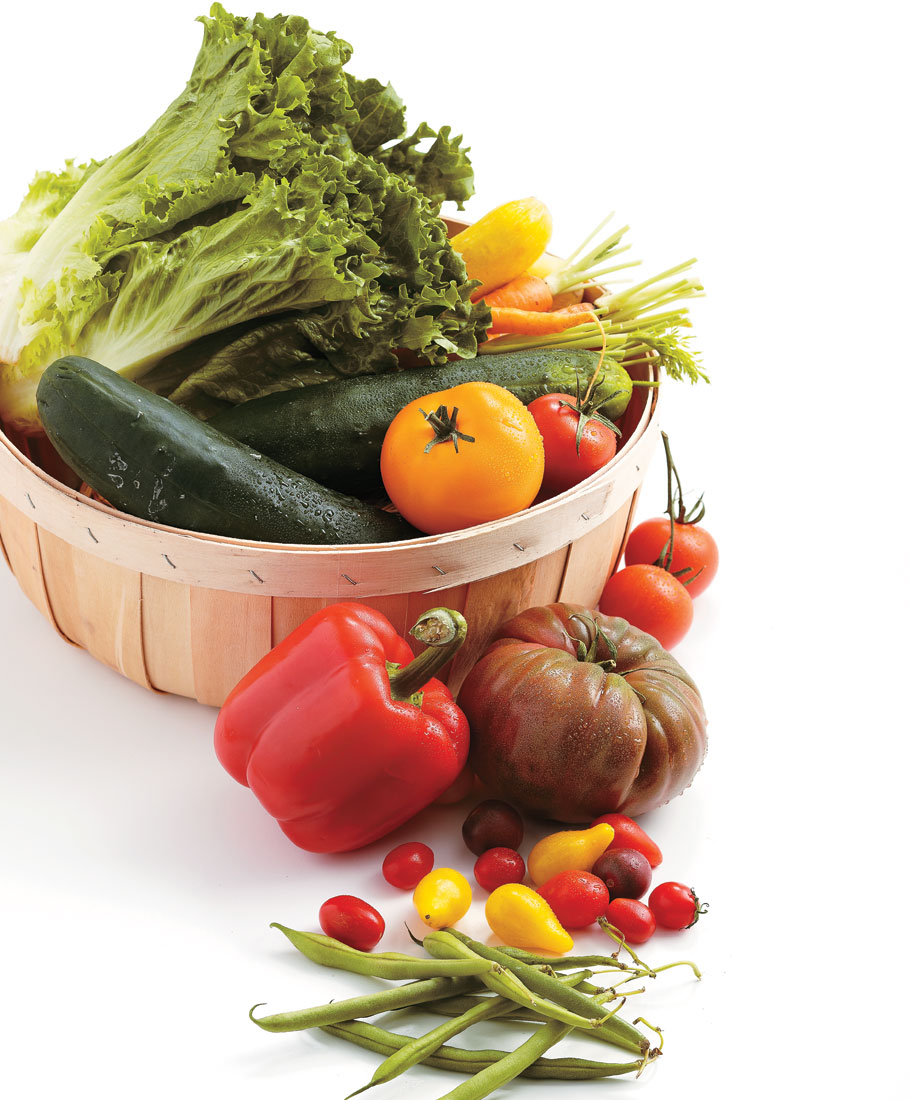
Fresh Produce is Everywhere
Don’t limit yourself to just the supermarket. Farmer’s market stalls, roadside stands, and even your own backyard herb containers can provide bursts of bright, fresh, seasonal, unprocessed, and local produce. Give it a try — you won’t be sorry you did. Here’s a quick guide for what to look for and when.
Let Your Fingers Do the Picking
Shopping fresh is also easier than ever with online sources. They make produce “seasonal” for those in colder or less temperate climates. They’re great resources for information and education about unique, exotic produce or the seasonality of your favorite fruits and veggies, too. These are a couple of our favorite sources:
melissas.com is a great place for fresh fruits and vegetables from across the globe.
friedas.com known for introducing kiwi to the U.S in 1962, Frieda’s offers unique, hard-to-find produce.
When Fruits and Vegetables Are In Season
Spring: radishes, asparagus, strawberries, peas
Summer: corn, cucumbers, tomatoes, zucchini
Fall: Sweet potatoes, broccoli, plums, cauliflower
Produce 411
Follow these general rules of thumb to get the most out of your produce.
DON’T BAG IT
Plastic produce bags help wrangle fruits and veggies at the market, but for storing, remove produce from the bags, or at least open the bags. Otherwise, theymay fall victim to trapped ethylene gases, accelerating the ripening process and deteriorating produce faster.
NEVER REFRIGERATE TOMATOES
These fruits prefer 65 to 70 degrees, so the best place to store them is on your kitchen counter, away from direct sunlight. Refrigeration makes the flesh mealy, and the fruit taste less flavorful.
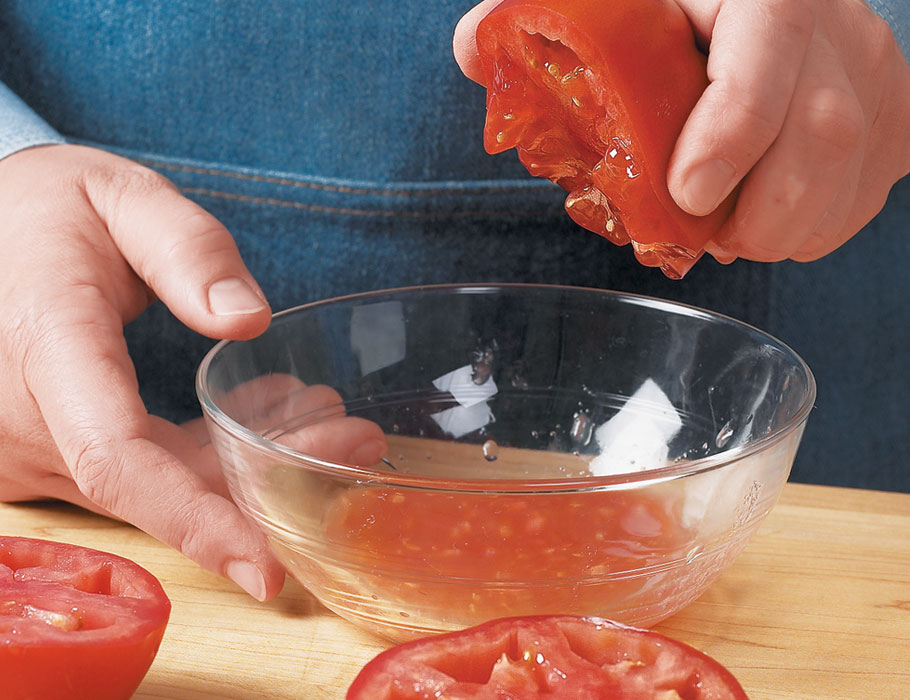 Seeding tomatoes not only removes seeds but eliminates some of their watery quality. Simply cut the tomato crosswise to expose the seed chambers, then gently squeeze each half.
Seeding tomatoes not only removes seeds but eliminates some of their watery quality. Simply cut the tomato crosswise to expose the seed chambers, then gently squeeze each half.
GENTLY RINSE BERRIES JUST BEFORE USING
Delicate berries can become mushy and even moldy if soaked in water or if stored after rinsing. Instead, place them in a colander and rinse just before using or eating, shaking off any excess water. Or, fill a salad spinner with cold water, place the berries in the spinner basket and dunk, drain, and gently spin dry.
How to Use Fresh Herbs
Tossing in a few fresh-cut herbs is one of the quickest ways to set your cooking apart from others — they add loads of flavor in just minutes.
PICKING Look for herbs with evenly-colored, supple leaves without any wilting or spotting. Because water deteriorates them, wait to wash herbs until just before using.
KEEPING Store long-stemmed herbs, like cilantro and parsley, in the fridge in a vase of water covered with a plastic bag. In the case of basil, do not refrigerate. Store short-stemmed herbs in airtight containers in the crisper drawer.
INFUSING To get the most mileage from herbs, discard any wilted leaves and add remaining portions (stems too) to a clean, dry bowl or bottle, then add quality olive oil and let sit, covered, for about a week. Refrigerate the oils to prevent bacterial growth.
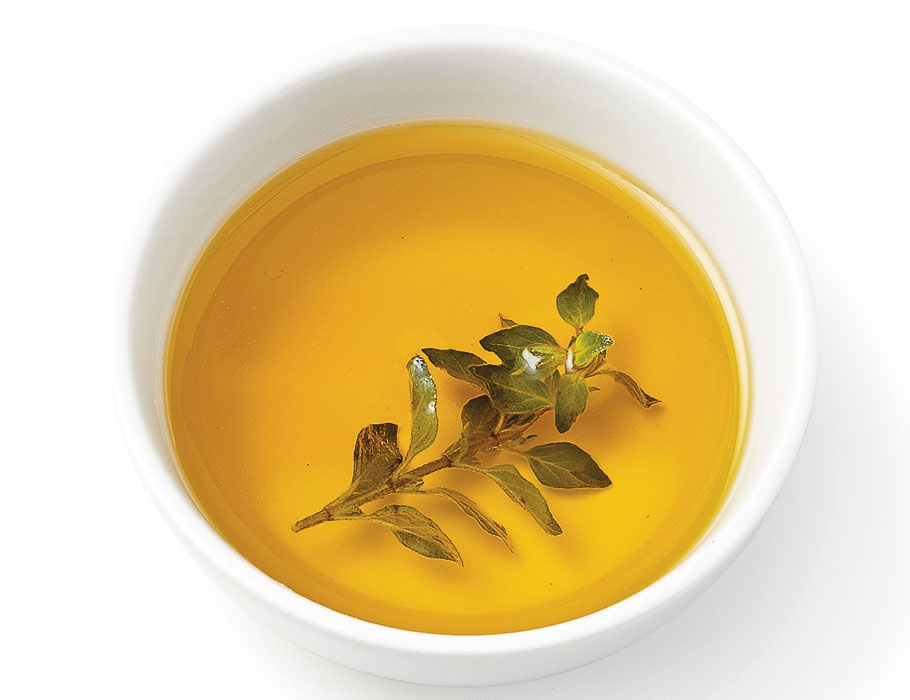
Read more about fresh herbs here.
Handy Fruit & Vegetable Tools
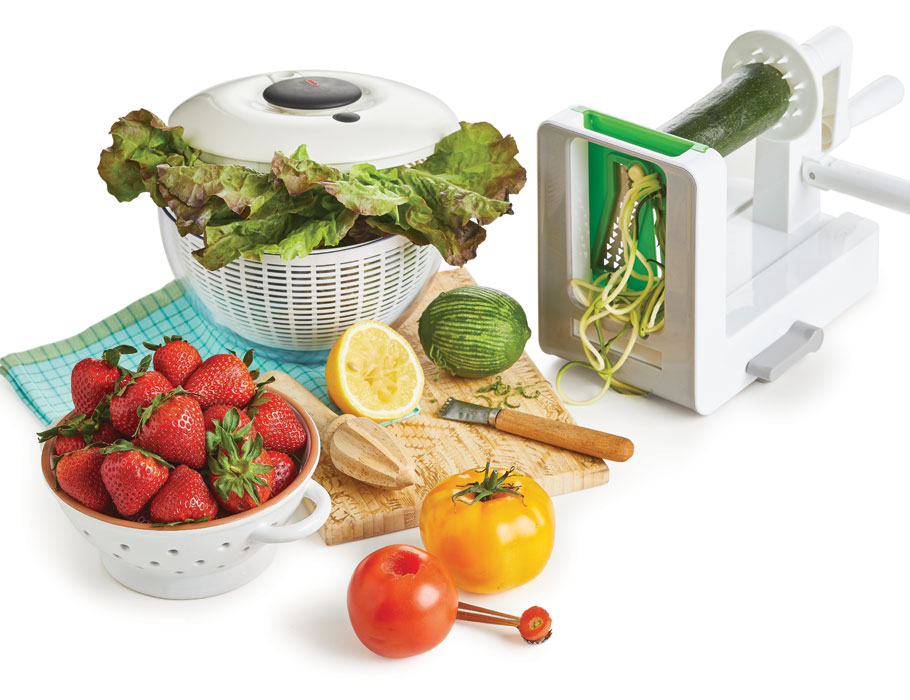 COLANDER Good for more than just draining pasta, clean produce with a swift pass under running water or a quick soak in a big bowl of water with a colander or sieve to hold produce.
COLANDER Good for more than just draining pasta, clean produce with a swift pass under running water or a quick soak in a big bowl of water with a colander or sieve to hold produce.
HULLER/CORER Make fast work of removing the cores and hulls of fresh strawberries and tomatoes for salsas, desserts, and sauces with this handy claw-toothed huller.
MANDOLINE Paper-thin slices and fast juliennes or strips result from this speedy way to prep summer’s bounty using a mandoline.
SALAD SPINNER Fragile greens, sprouts, berries, and herbs can use a quick spin (after a rinse) in a salad spinner to dry them, guaranteeing crispness and freshness. To protect them as much as possible, consider lining the spinner basket with paper towels.
REAMER & ZESTER What’s the easiest way to add “fresh” flavor to a dish any time of the year? Bright, fresh citrus. A reamer is invaluable for squeezing out the most juice, while zest adds another punch of flavor. A Microplane or zester is the best tool for making quick and easy work of orange, lemon, lime, and grapefruit rinds.
SPIRALIZER All the rage recently has been about spiralizing vegetables with this handy spiralizer, and for good reason. Because by spiralizing, you’re naturally eating more vegetables and, consequently, adding more nutrition to your diet without even realizing it.
Product Recommendations
Interested in cooking? Need some supplies?
Check out some of the tools we like. All products featured on Cuisine at Home are independently selected by our editors; we may earn an affiliate commission from qualifying purchases through our links.